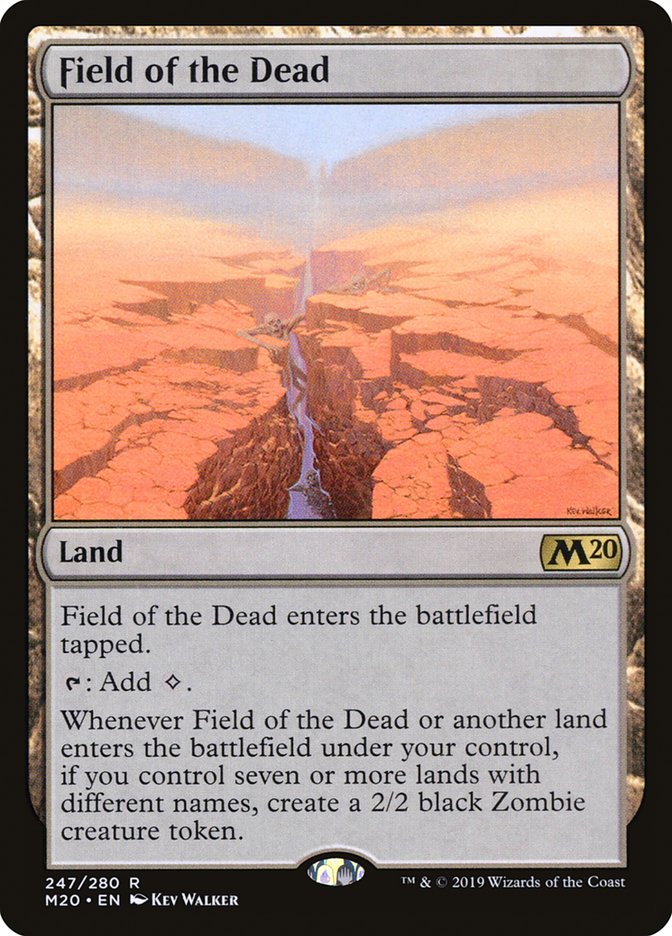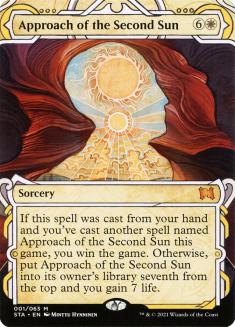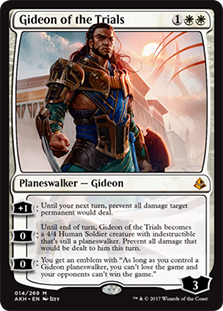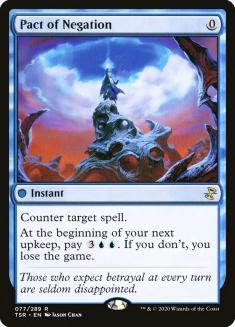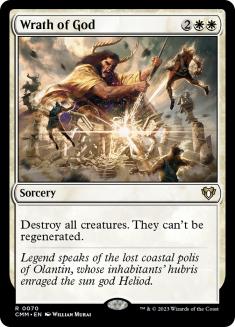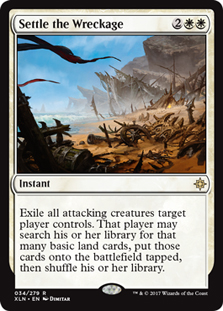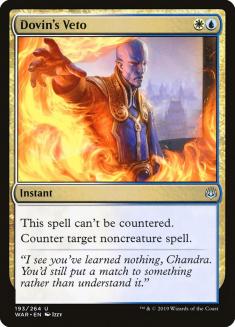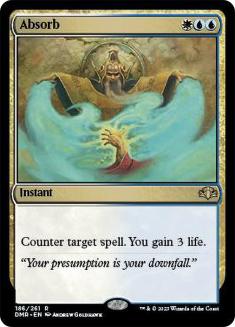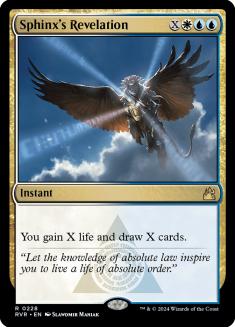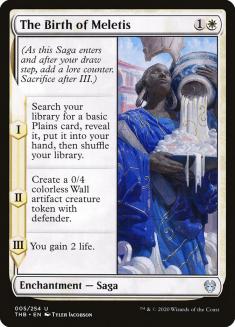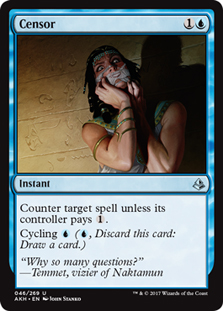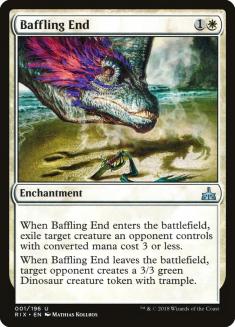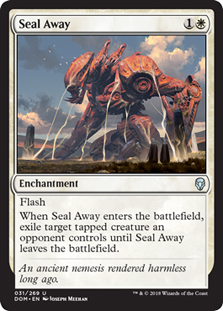On last week’s episode of bringing the fury of control to Historic, Esper was the shard of choice. I still love the power it brings, even though the toughest matchup continues to ramp up in numbers with each passing day. Field of the Dead is the most problematic card for control, that was obvious; however, I had hoped it would not be the most played deck out there. Mono-Red Goblins was running the show, with a few appearances from some sacrifice strategies, and that metagame was easy pickings for any of the tap-out control decks that I have crafted. Unfortunately, the bannings paved the way for ramp decks to temporarily ruin the format. I use the term “temporarily” because there’s no chance that Field of the Dead remains legal in Historic.
Removing Teferi, Time Raveler, a format nobody, and leaving Field of the Dead to roam free, was an absurd series of plays from Wizards of the Coast. We all saw what Field of the Dead did to Standard while it was legal, and it was not just the suppression of control. Aggro often depends on the speed and wide strategy of its creatures, which Field of the Dead completely invalidates. The support spells in ramp provide some life gain, battlefield control, land progression, and end-game haymakers that together create an unbeatable force against non-combo decks of the format. The bannings took out Kethis, the Hidden Hand, leaving Historic at the mercy of big mana until the next fix is in. They will ban Field of the Dead without a doubt, but the damage that’s being done now continues to compound.
I’m not one to sit out a format, regardless of how bad it gets. Control can always adapt, even if it is at rock bottom. The powerful tools from a couple years ago can prop up a weakened archetype, especially Teferi, Hero of Dominaria. Big Teferi does not play well with continuous production of Zombies, but it does wreck all the other decks in the format. For this reason, it is still a staple of any control deck in Historic; however, it cannot be the primary win condition moving forward. Once they take Field of the Dead out, we can return to decking our opponents with a beautiful Big Teferi ultimate, but in the meantime, we must get a bit more creative.
Planeswalkers (9)
Lands (26)
Spells (25)

Control’s savior in Historic is Amonkhet Remastered. When I was focused on a Dimir-based control deck, the return of a few control powerhouses of the past did not prompt me to change. Thoughtseize is great but Thought Erasure has become the life total friendly option that assists in hitting land drops. Wrath of God could not fit in a deck that cannot guarantee double white on Turn 4, while Sphinx’s Revelation was a bit too slow for the Goblin-infested world we lived in. That was then, this is now.
Amonkhet Remastered arrived to help control mages defeat Field of the Dead and it requires a complete shift back to Azorius Control. Azorius Control can house the older control staples and take full advantage of a better win condition that’s necessary to beat ramp decks at their own game. The traditional planeswalker victory path is out the window when lands come to kill, so we look to an expensive sorcery for salvation.
Approach of the Second Sun is an iconic win condition of the past, giving control mages an easy combo kill in the late-game. On Turn 7 it is deployed for the first time, making the second copy lethal. Luckily for us, Approach of the Second Sun returns to the library as the seventh card, allowing us to play a limited amount of copies in the deck. Playing two of them is the norm just in case one is defeated by disruption early on. I have played a great deal of control decks that utilize Approach of the Second Sun, but none are as powerful as this iteration.
Pact of Negation is another card that has been included in many of my older control and combo decks. When it was previewed, I thought nothing of it, because Magic has changed drastically since its original debut. Decks that I used it in did not have the potency that Amulet Titan has now, and Pact of Negation has made that clear. Amulet Titan can search for the land it needs, a Primeval Titan via Summoner’s Pact, or a Force of Will disguised as a Pact of Negation. When I played Pact of Negation, it was a free spell that always tapped me out on the following turn. When it returned with Amonkhet Remastered, I was sure it would be more of a thorn in my side than an ally. With the removal of key combo pieces out of Historic, it turns out Pact of Negation joins forces solely with control once again.
The combination of a Gideon of the Trials emblem and Pact of Negation is brutal for opponents, which is the lifeblood of Azorius Approach. Not only has this helped against the ramp decks, it has crushed the hopes and dreams of all other enemies that wish to punish you for tapping out. There have been other folks trying to solve the control puzzle in Historic, but I believe they fell short by forsaking Big Teferi in this equation. Having access to a completely free counterspell falls short if your mana utilization is not maximized. Tapping out for Gideon of the Trials and making an emblem with Pact of Negation backup is great, but it needs to take it a step further.
Azorius Approach takes every opportunity to tap all its mana to rid the battlefield of threats each turn. I have upped the game with sweepers, making sure to include four Wrath of God and two Settle the Wreckage in the maindeck. This is a vital piece of Azorius Approach because it’s less prone to losing due to having dead cards in hand. If the format had a bunch of blue decks countering everything, this would be problematic. Since the format is entirely comprised of aggro and ramp decks, having a bunch of creature destruction is not a liability. The result of these matchups is the same, stay alive and a guaranteed game-ending sorcery will save the day. In a deck like this, tapping out for survival and battlefield advantage is vital, and there the reactive enthusiasts must adapt for the time being.
Even though I love tap-out control, I wish the format were in a place where I could sit back with Dovin’s Veto and Absorb. Even if they remove Field of the Dead, that reality will not exist until blue decks run the streets again. This type of deck makeup works in the current Standard because it’s Sultai Ramp everywhere, but not in Historic. The way to defeat your opponent is with Approach of the Second Sun, a spell that’s difficult for the current best decks to interact with and that’s the reason why this deck is so powerful.
Not paying for a Pact of Negation is the foundation of Azorius Approach; however, the support spells are what interest me the most. Wrath of God replacing Shatter the Sky is a fun upgrade, even though it’s not a game-changer. Sphinx’s Revelation is another spell that immediately made me jump for joy, until I realized what year we’re living in. Although I am certain it’s not the best card for a tap-out control deck in general, it does play well with a combo piece that needs to be quickly redrawn. As Approach of the Second Sun descends to the seventh card in the library, Sphinx’s Revelation happily retrieves it at a much faster rate than other options.
There has been heavy criticism surrounding Sphinx’s Revelation and its role in this type of control deck, but the results are conclusive. Like the old days, Sphinx’s Revelation sometimes is cashed in for a card or two, leaving the controller very unimpressed. This is a natural side-effect of a spell with X in the casting cost and does not concern me. In a traditional control deck that can use those turns for additional planeswalkers and battlefield advancement, it gets much worse. Here in Azorius Approach, the two copies have often been game-breaking. I would not increase the amount of Sphinx’s Revelation played in this deck, but I have been very happy with the production of the two thus far.
The early-game of Azorius Approach looks very close to that of traditional Azorius Control in Standard. The Birth of Meletis has fallen off a bit in Standard but is an absolute powerhouse in Historic. Hitting land drops has never been so important in control, as missing one nearly ensures setting back the late-game win condition. These facts led to playing three copies of the enchantment, as well as 26 total lands in the maindeck. The Wall and two life produced is a huge bonus, more so than in other formats. In Historic, you are either hoarding land to hit that Approach of the Second Sun or trying to preserve your life total against the rest of the aggressive format. Having a blocker come with the land, in addition to restoring a couple life points, makes The Birth of Meletis a must for control decks in Historic.
Censor, Baffling End, and Essence Scatter round out the early-game disruption that Azorius Approach must have in order to achieve victory. Censor is my favorite of the bunch, providing a nice hit against Turn 2 and Turn 3 of the opponent, or cycling away when land drops are needed. Anything with cycling in this deck is great when the final goal is to retrieve an Approach of the Second Sun for a return cast.
I went back and forth with the choice between Baffling End and Seal Away. Baffling End is a great Turn 2 play, against a creature that may have not had the opportunity to get any value yet, but Seal Away jumps in at instant-speed for a similar effect. Seal Away also works wonders with Big Teferi, but can be a liability otherwise as when it’s removed or the creature does not attack, trouble is ahead. Baffling End has the small downside of the opponent getting a token, which is much more palatable than the original creature returning. Ultimately, I went with what I thought was the better card in the current metagame; however, it’s likely to change as the format does.
The sideboard is not the most exciting, with one glaring exception. The return of Rest in Peace was monumentally important for control in Historic, as the graveyard-based decks combined with the big-mana decks to make our life hell. Rest in Peace slams the door shut immediately on anyone that tries to bring the dead back, which has always been a weakness for my favorite archetype. Additional counterspells for slower decks, another Field of Ruin for ramp, and anti-aggro cards complete the sideboard for this iteration of the Historic metagame.
Thanks to Amonkhet Remastered, we have a fighting chance to reach to the top. Once Field of the Dead is removed, decks like Azorius Approach will move from competitive to feared.



